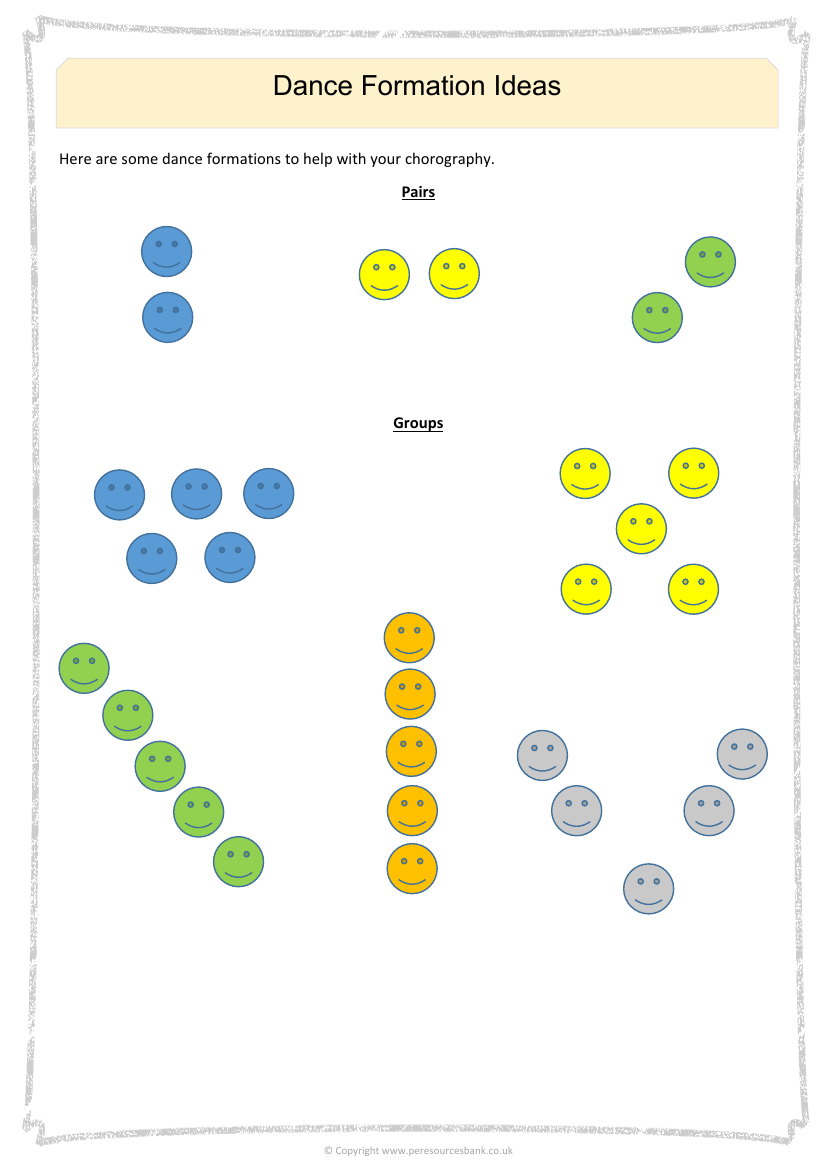Formations - Dance

Physical Education Resource Description
When creating a dance routine, the arrangement of dancers on the stage, known as formations, plays a crucial role in the visual impact of the performance. To assist with your choreography, several dance formations can be implemented, each offering a different aesthetic and dynamic to the routine. Formations can vary widely and are typically chosen based on the number of dancers, the style of the dance, and the desired effect on the audience.
For instance, working with pairs allows for symmetry and interactions between dancers, which can be used to tell a story or showcase a relationship through movement. Larger groups, on the other hand, offer the opportunity to create more complex patterns and shapes, such as lines, circles, or V-formations. These can add layers to the performance, making it more visually captivating. Choreographers often experiment with various dance formation ideas to find the perfect match for their vision, ensuring that the dancers are positioned in a way that complements both the music and the narrative of the dance.



